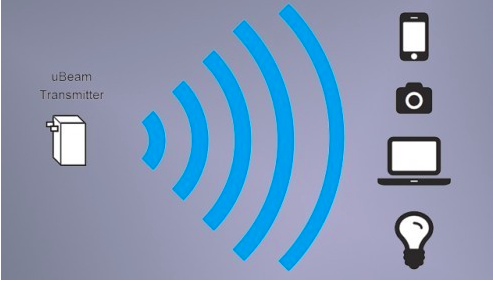
November 08, 2015
Some would call a reliable wireless charging technology in the very near future a pipe dream, but a handful of companies are hard at work to make it possible. Meredith Perry, a graduate of the University of Pennsylvania and CEO of California-based uBeam, wants to pipe ultrasound beams at your device and pipe up her company's critics while she's at it.
The basic premise of uBeam's technology is that wireless transmitters on the walls of your home can track and send inaudible, high-pitched frequencies to your devices. A receiver converts the sound vibrations into electricity, and there's your wireless charge. But it's not that simple, of course. (A more technical explainer can be found here).
Critics of uBeam have pointed it out that it doesn't work through walls, clothing, people, or bags. They've also said it's a risk for burns "ultrasound sickness," an argument that has been dispelled by uBeam's safe frequency range.
Fed up with the naysaying, the company finally released a series of specs that explain some of the engineering and patents by uBeam, according to TechCrunch. It's no small deal, either, considering $23.4 million in investments from heavy hitters like Andreessen Horowitz, Founders Fund, UpFront Ventures, Marissa Meyer, and Mark Cuban.
The company disclosed that it has 6 issued patents and more than 30 filed, primarily around its ultrasonic transducer, which submits and receives sound waves at a single frequency in the range of 45kHz to 75kHz. Its output is in the range of 145dB to 155dB. As long as it isn't blocked, a single uBeam transmitter can charge up to four devices simultaneously within a four-meter range.

Maybe most interesting, the transmitter delivers a minimum of 1.5 watts of electricity to smartphones, meaning it can charge devices at a similar rate to wires if it's within the right range. While some may envision wireless charging as a leave-it-anywhere, uBeam holds the promise of keeping your phone charged while you're either with it or heavily using it.
When uBeam finally launches, it plans to work with partners to sell the transmitters and have them installed in restaurants, hotels and cafes.
To put the skepticism in perspective, TechCrunch talked to two leading ultrasonics and electrical engineering experts. Both said that while it's incredible challenge to pull off, it doesn't violate physics. The bigger question is whether uBeam can achieve a level of efficiency that makes their product commercially viable.
That's still the multimillion mystery: uBeam has not revealed the retail cost of its transmitter. We won't fully know how well it works until the company begins demonstrating the publicly next year.
Listen to Perry – who came at this from outside of engineering – discuss how she made uBeam possible.